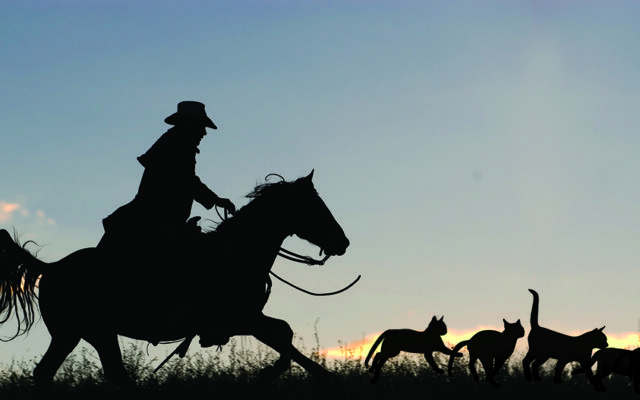An advanced leadership skill that I have developed over the last three to four years … What does the expression mean? Where does it originate?
It is a combination of two well-known expressions:
- Herding cats
- A leopard never changes its spots
What I have come to recognise is that there is a higher degree of difficulty in herding leopards than in herding cats, where the people involved hold particular mindsets that are acting as barriers to their successful engagement in particular activities or their transition to a different way of working together.
In some cases, the leopards have been part of the transformation team, making it even more challenging. Not only are they encountering difficulties in conceiving of the “new world” that will emerge through the transformation program, but, oftentimes, their communication with various stakeholders is reinforcing patterns and mindsets that are not helpful to the successful transition of the broader stakeholder community!
So … how might we go about herding leopards?
The first step is implicit in the statement – that we recognise that we appear to be engaging with some “leopards”. A couple of pointers in recognising and confirming that you are dealing with leopards:
- The most established leopards operate with a relatively “fixed mindset” as opposed to “growth mindset”. If you are not familiar with these terms, there is lots of information and guidance on this topic. Carol Dweck first coined the terms “growth mindset” and “fixed mindset”. You can find material on the web, videos on Youtube, books, and other resources which will allow you to understand these terms and develop “tools” for working with people who have a fixed mindset.
- Another pointer can be the language that is used. A particular business analyst comes to mind and my interactions with her. We would be talking about a particular topic – typically a business process or business practice, and her response to my description and explanation would be “That doesn’t make sense to me”. Or if she had explained something to me, and I was having difficulty, she might say “Well, it makes sense to me”. We all makes sense of “things” in our own way, based on our past experience and the patterns / mindsets we hold. If there are difficulties in establishing a “shared understanding” or a “collective mindset”, it may be that some of the participants have a particular mindset that is not helpful, or more generally, a fixed mindset around a broader set of topics, issues or “systems”.
- A third pointer can be the realisation that they see the “systems” with which you are dealing from a different perspective or through a different “worldview”. Our approach takes a systems thinking based approach to the situation, treating teams and organisations as social systems, and understanding them in the context of the broader ecosystems of which they are part. Again, there is a large amount of material in relation to systems thinking, worldviews, mindsets, belief sets that may be helpful to you in “diagnosing” or confirming your diagnosis of the leopard syndrome. A helpful resource in this area is Donella Meadows “Thinking in Systems”.
The next step is the seemingly more difficult step – in part, because you cannot change other people. They have to change themselves. So, your task is to create the space in which they might be able to see things differently and appreciate their circumstance and/or their role in a completely different way.
In this area, we have found it helpful to start helping them understand how to:
- be more brain savvy
- appreciate that there are triggers which they may perceive as threats, consciously or non-consciously
- hold or freeze the threatening situation and explore how it might be seen from a different perspective
“Thinking in Systems” includes information about different ways to “intervene” in systems to prompt change. These provide a powerful range of approaches and tools which can be helpful in shifting perspective and opening up new possibilities.
If you would like to explore this further, please contact us to talk about any of the following half-day sessions which may prove helpful:
- 6 principles of neuroscience for leaders
- mindsets matter in change and transformation
- cultivating collective mindset and capabilities
Article by channel:
Everything you need to know about Digital Transformation
The best articles, news and events direct to your inbox
Read more articles tagged: Change & Transformation, Featured, Leadership







